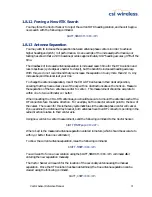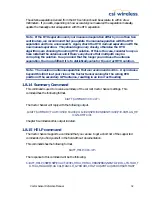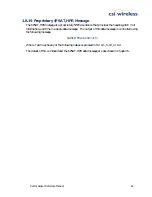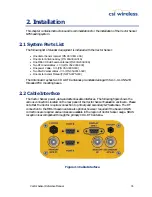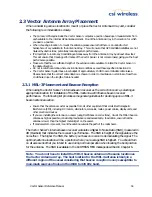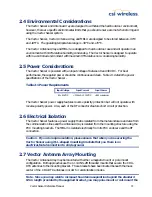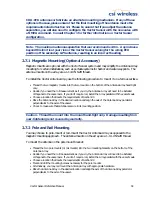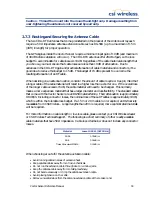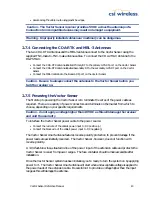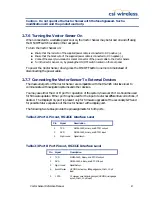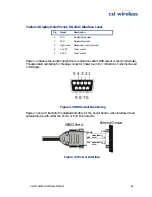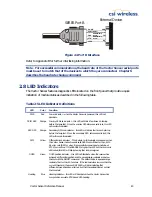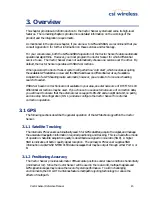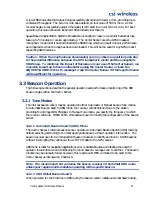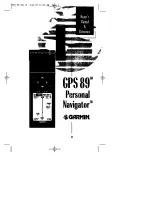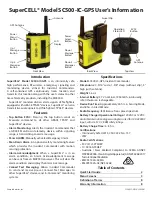
Vector Sensor Reference Manual
38
CDA-RTK antennas or fabricate an alternate mounting mechanism. If any of these
options is the case, please ensure that the final mounting of the antenna meets the
requirements listed in Section 3.3. Please be aware that if you adjust the antenna
separation, you will also need to configure the Vector Sensor with the new value with
a NMEA command. Consult Chapter 1 for further information on Vector Sensor
configuration.
Note - The maximum antenna separation that we recommend is 2.0 m. Any increase
beyond this limit is at your risk or the Vector Sensor solving for the wrong RTK
position of the secondary GPS antenna, resulting in an incorrect heading
2.7.1
Magnetic Mounting (Optional Accessory)
Magnetic mounts are optional with the Vector Sensor system and may simplify the Antenna Array
mounting for certain installations, such as portable systems for harbor and waterway pilots. The
antenna mounts on the array are a 1-14-UNS-2B thread.
To install the Vector Antenna Array use the following procedure to mount it on a ferrous surface.
•
Thread the two magnetic mounts into the two mounts on the bottom of the Antenna Array hand tight
only.
•
Decide if you need the roll measurement, as if you do, the Antenna Array will need to be installed
orthogonal to the vessel axis. If you don’t require roll, install the Array parallel with the vessel’s axis.
•
Choose a location that meets the requirements of Section 3.3
•
Place the Antenna Array in the desired location and align the axis of the Antenna Array parallel or
perpendicular to the axis of the vessel.
•
Check to make sure that antenna is secure in its mounting position.
Caution - Thread the mount into the mount hand-tight only. Damage resulting from
over-tightening is not covered by warranty.
2.7.2
Pole and Rail Mounting
You may choose to pole-mount or rail-mount the Vector Antenna Array as opposed to the
magnetic mounting approach. The antenna mounts on the array are a 1-14-UNS-2B thread.
To mount the antenna on the pole mount bracket:
•
Thread the two pole mounts (or rail mounts) into the two mounting brackets on the bottom of the
Antenna Array
•
Decide if you need the roll measurement, as if you do, the Antenna Array will need to be installed
orthogonal to the vessel axis. If you don’t require roll, install the Array parallel with the vessel’s axis.
•
Choose a location that meets the requirements of Section 3.3
•
Mark and drill the mounting holes as necessary for the pole mounts
•
Alternatively, you may rail mount the Antenna Array with appropriate hardware
•
Place the Antenna Array in the desired location and align the axis of the Antenna Array parallel or
perpendicular to the axis of the vessel.








